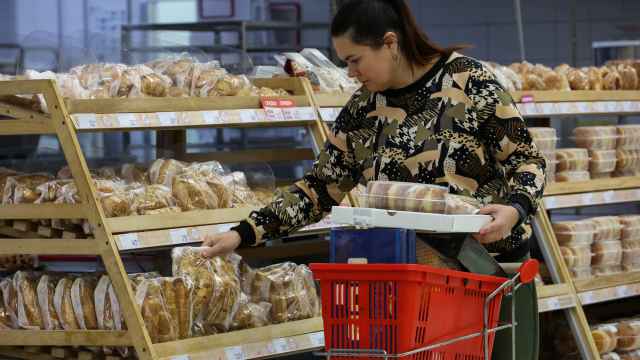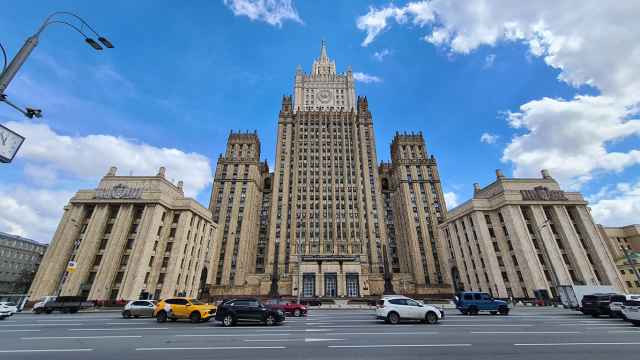The ruble may have come under “attack” from speculators betting on its decline, as there are few fundamental reasons for its depreciation since the middle of September, Otkritie Financial said Thursday.
The Central Bank sent letters to banks requesting information on all foreign-exchange transactions amid concern that ruble trading may have spurred an increase in outflows of capital from Russia, Kommersant reported Thursday, citing the letter.
“It is not clear whether banks were building up the foreign-currency positions on their own or at the request of their large clients,” Vladimir Tikhomirov, chief economist at Moscow-based Otkritie, wrote in a research note e-mailed today. “But it does smell of an attempt, perhaps successful, of a speculative attack on the ruble.”
The ruble has lost 1.1 percent against the dollar and 7.5 percent versus the euro since Sept. 13, leaving it 4.2 percent weaker against the dollar-euro basket that the Central Bank uses to manage the ruble and curb swings that hurt exporters.
Russia’s currency was the worst performer against the dollar of the 25 emerging market currencies tracked by Bloomberg over that period, only outpaced by the Colombian peso’s 3.8 percent drop. The ruble weakened even as the price of oil, Russia’s chief export earner, jumped 6.1 percent.
Net capital outflows from Russia will hit $22 billion this year, the Central Bank said Nov. 16, more than double the previous forecast of $8.7 billion. Central Bank First Deputy Chairman Alexei Ulyukayev told a conference in Moscow Thursday that outflow is driven by companies electing to pay back foreign currency-denominated debt.
Traders probably stepped up so-called short positions on the ruble versus the basket, or bets it will depreciate, from the middle of September, Tikhomirov said.
The ruble climbed 1.2 percent to 30.99 per dollar by the close in Moscow on Thursday, the most since Oct. 5, and it was little changed at 42.31 per euro. It was 0.6 percent stronger at 36.08 against the basket, which is made up of about 55 percent dollars and 45 percent euros.
The Central Bank has sold a net $2 billion of dollars and euros so far this month to arrest the ruble’s drop, according to Tikhomirov’s estimates. It sold a net $3.2 billion last month and $1.1 billion in September, after being a net buyer of foreign currency in the previous eight months, he said.
A Message from The Moscow Times:
Dear readers,
We are facing unprecedented challenges. Russia's Prosecutor General's Office has designated The Moscow Times as an "undesirable" organization, criminalizing our work and putting our staff at risk of prosecution. This follows our earlier unjust labeling as a "foreign agent."
These actions are direct attempts to silence independent journalism in Russia. The authorities claim our work "discredits the decisions of the Russian leadership." We see things differently: we strive to provide accurate, unbiased reporting on Russia.
We, the journalists of The Moscow Times, refuse to be silenced. But to continue our work, we need your help.
Your support, no matter how small, makes a world of difference. If you can, please support us monthly starting from just $2. It's quick to set up, and every contribution makes a significant impact.
By supporting The Moscow Times, you're defending open, independent journalism in the face of repression. Thank you for standing with us.
Remind me later.





